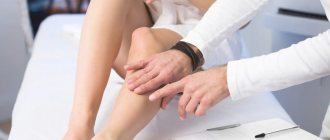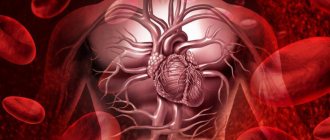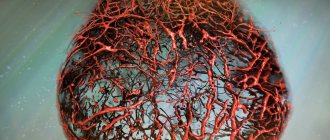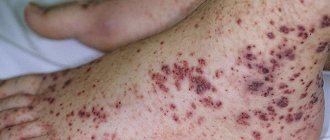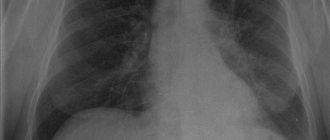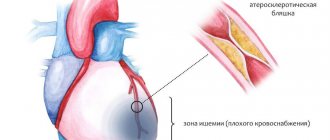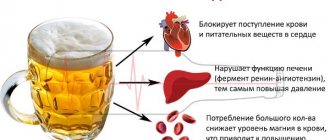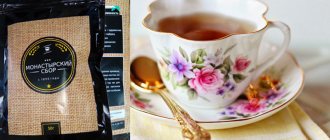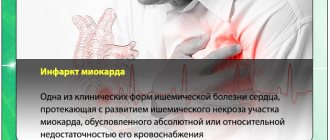Humanity has been familiar with hirudotherapy Medicinal leech therapy (hirudotherapy): a brief overview (treatment with leeches) for many thousands of years. Thus, in Ancient Egypt, “leech” bloodletting was used to treat battle wounds, skin diseases, nervous system diseases, various infections and even toothache.
It is curious that modern doctors do not deny the health benefits of leeches. Hirudotherapy is used by What Is Leech Therapy? , for example, in preparation for plastic surgery, to reduce the risks of thrombosis, varicose veins and other conditions associated with circulatory disorders. In fact, these creatures act as an alternative to some medications. And there are reasons for this.
Hirudotherapy - what is it?
This is the name given to therapy with leeches. This method of treatment is also known as bdellotherapy or dellotherapy (a term of Greek origin). But the most popular scientific name for leech treatment is hirudotherapy (this is a literal translation from Latin: therapy means treatment, and hiruda is translated as leech).
It is considered a type of naturopathic medicine, the main principle of which is the possibility of self-healing and self-regulation, that all processes are controlled by natural energy, that nature has such potential, and it must be revealed.
Hirudotherapy is used to mobilize the internal forces of the body and launch natural healing mechanisms. Since the body is affected by an external natural factor - living creatures from the subclass of annelids, it is classified as physiotherapy.
Why are leeches used in medicine? This is a measure of the effect on blood circulation. Initially, the health benefits were seen only in the removal of “bad blood” from the circulatory system; later the anticoagulant effect of leech secretion and the presence of a complex of enzymes in it were discovered. It was found that these biologically active substances are capable of exerting local and resorptive (systemic) effects.
Responsible step
Having decided to independently undertake treatment at home using such unsightly-looking and, at best, non-disgusting animals, a person must learn the basic rules, which we will remind you once again:
- Thoroughly study the indications, find out if there are any contraindications and prepare for possible reactions (itching, urticaria);
- It is better to buy a leech at a pharmacy or from a trusted manufacturer at a higher price than to chase a cheap product (it may turn out to be of poor quality and not capable of providing a therapeutic effect);
- Learn the rules for keeping animals at home so that they remain healthy and can be used for treatment;
- Familiarize yourself with the schemes for placing leeches in relation to your disease;
- Do not treat the whole family with one batch of leeches (everyone may have their own diseases, including viral ones);
- It is extremely undesirable to place the same specimen even for yourself, but in different places far from each other (the oral cavity, the area around the anus - how can they be combined?) - it will take a long time to treat the bacterial infection;
- Repeated use of the same individual in the same patient and in the same areas is possible no earlier than after 2 weeks (preferably 3);
- Do not try to cure all diseases without exception, for example, viral hepatitis “C” (bdellotherapy cannot cure it, but other problems can be acquired);
- Before starting treatment, you need to take a general blood test and it is very advisable to do a coagulogram (perhaps the patient does not know everything about himself);
- During hirudotherapy, try to avoid physical activity.
These simple rules must be followed so that treatment does not turn into trouble. However, it is still better to talk to specialists and your doctor.
Use of leeches in medicine
The beneficial properties of parasites that feed on human and animal blood have been studied everywhere for many generations. In different parts of the world, different representatives of the class of belt worms are used for medical purposes. In Russia and Europe, only a certain category of leeches is recognized as medicinal and their use is officially approved.
In the classification system of the animal kingdom, they are combined into a separate species (the smallest systematic category), called the “medicinal leech.” This division explains the popularity of the term “hirudotherapy”, because scientific correctness is observed, because the Greek name bdellotherapy is equally applicable to treatment with any leeches, and hirudotherapy is exclusively applicable to the genus Hirudo.
According to their signs, origin and main characteristics, they are part of the order of proboscis or jawed leeches. It is believed that this type of parasite is of greatest importance to humans and that only they are suitable for medical use.
It cannot be said that hirudotherapy successfully treats everything and in all cases - there are also contraindications for use. Some medicinal leeches can be beneficial and cause harm, because... may be carriers of infectious agents (pathogens). To exclude such a possibility, it is important to use individuals specially raised in artificial conditions.
Compliance with the feeding regime is also a guarantee of cleanliness - the absence of pathogenic flora in their intestines that can get into the wound when sucking. The animal must fast for some time, so it will become sterile. It is advisable that at least 4 months have passed since the last feeding. According to the results of an analysis of studies, the maximum benefit and minimum harm of hirudotherapy appears 4-5 months after the previous meal with a leech. At this moment, it reaches the degree of hunger, medicinal qualities and activity necessary for a therapeutic effect, showing a low risk of infection.
A little history
By calling the leech a real living pharmacy, many scientific doctors thereby recognize its unique medicinal properties. The reputation of this scary-looking worm-like animal has been formed over many centuries. Scientists who thoroughly study the path of the leech as a remedy claim that the use of a “living needle” or “living syringe” for bloodletting, as the leech was later called, began in Ancient India and represents one of the areas of Ayurveda.
posing of leeches, engraving, 19th century.
The leech was used by the “father of medicine” Hippocrates, the Roman physician Galen, it was used by the great scientist Avicenna (Ibn Sina), the best healers of antiquity treated all diseases with its saliva and, thus, it quietly but safely reached the Renaissance. The widest use of hirudotherapy occurred in the 17th and 18th centuries; leech was used for migraines, tuberculosis, gonorrhea, and epilepsy. In general, under different and very distant pathological conditions.
By the end of the 18th and beginning of the 19th century, ideas about many things began to change and the leech was forgotten for some time. In Russia, the famous doctor M. Ya. Mudrov was actively involved in the introduction of hirudotherapy into medical practice.
In the middle of the 19th century, the leech gradually faded into the background and began to be considered a past stage in medicine, although bloodletting still leads among other therapeutic measures, but is used for slightly different purposes and by other methods. Meanwhile, the famous surgeon N.I. Pirogov, having his own convictions on this matter, continued to use these worms to stop bleeding, for fractures, tumors and other surgical diseases. Especially, the leech turned out to be useful during the Crimean War, in which N.I. Pirogov was a participant (and the chief surgeon of Sevastopol).
main types of beer
However, oblivion did not last long and at the end of the 19th century the study of this animal began seriously. A substance that prevents blood clotting (anticoagulant) was isolated from the leech extract, and an enzyme (hirudin) was obtained from its saliva, thanks to which the leech has a therapeutic effect. This was in 1884. This is how the medicinal leech (Hirudo medicinalis) appeared, differing in its properties from different types of worm-like animals living in water bodies. At the same time, the production of pharmaceuticals based on hirudin began.
Until the 70s of the last century, jars with swarming black-brown worms could be seen in outpatient clinics and health centers, although they were placed less often. Hirudotherapy remained a priority in rural areas, where advanced technologies at that time did not reach, or, conversely, in large scientific centers where eminent scientists worked who did not change their views on hirudotherapy (therapist G. A. Zakharyin, ophthalmologist V. P. Filatov). The scientific development of bdellotherapy truly began in the second half of the 20th century.
How leeches treat humans
The therapeutic effect is due to the unique composition of the secretion of the salivary glands.
If there are indications for treatment by applying leeches, then the patient should know what leeches do and how they are useful:
- They pierce the outer cover of the body (sometimes the mucous membrane) to a depth of 1.5-2 mm, and introduce a set of proteins and peptides through saliva. By sucking, the parasites actively extract tissue fluid, a mixture of lymph and capillary blood.
- The sucked liquid remains in the stomach of the worm for several more months (therefore, for safety reasons, specimens should go on sale no earlier than 4 months).
- The pain from the procedure is minor. The session lasts 15-45 minutes. (the exact duration is as directed by the attending physician).
- A characteristic mark remains at the application site, usually healing within 10-15 days. The scars left after healing are noticeable weeks and months later.
It is known about medicinal leeches that they have three jaws, each bearing a row of small, sharp teeth, allowing it to quickly bite through the thick skin of a person or warm-blooded animal. One hungry individual is capable of sucking 5-15 ml of blood. The amount of liquid absorbed is visually determined (approximately) by the increase in size: a 7-9 fold increase in body weight is recorded.
The process of complete saturation can take up to several hours, after which the bloodsucker leaves its victim. In medical practice, the duration of contact is controlled.
What do leeches help with? The healing properties are based on 3 components:
- neuro-reflex effect - similar to the effect of acupuncture, only instead of special needles, the chitinous teeth of a medicinal leech act on reflexogenic zones (points on the body). Through irritation of sensitive endings, additional reserves of the body are activated;
- bloodletting - getting rid of stagnant, full of toxins, poorly circulating blood. The benefit of medicinal leeches also lies in the fact that due to artificial (dosed) extraction of blood from the vascular bed, the local blood flow is unloaded;
- biological effect - injection of a secretion that thins the blood, stimulating a number of biological reactions. In the fluid secreted by the glands, several dozen enzymes were found that help the body with inflammation, pain, the formation of scar tissue and blood clots. The main substance that leech saliva is rich in is called hirudin. This is the active product obtained by purifying the head part of the parasite. It is also synthesized artificially and used as a medicine. The main benefit of hirudin is that it suppresses the action of blood plasma thrombin (a natural component of the coagulation system), which causes thrombosis and is involved in the regulation of the inflammatory process.
These factors act simultaneously, the mechanism starts at the moment of the bite. The therapeutic effect is achieved by a combination of various actions, which allows not only to heal the body, but also to treat diseases with leeches.
What are the benefits of leeches for humans?
Before you begin treatment sessions, you should study all the PROs and CONS of hirudotherapy. Treatment with leeches has corresponding indications and contraindications. Indications for hirudotherapy are determined by a specialist after examining the patient, based on the clinical picture.
Practice shows whether it is useful to place leeches.
This physiotherapeutic procedure is prescribed by doctors from various fields of medicine:
- surgery,
- orthopedics,
- neurology,
- phlebology,
- ophthalmology,
- gynecology.
Today, this is the only non-surgical method of combating new and old blood clots. Leeches can be an acceptable replacement for NSAIDs and glucocorticoids (if they are intolerant).
An additional advantage of applying leeches is the simplicity of the procedure.
- The disadvantage is the high mobility of parasites; if they enter the urinary, respiratory tract, or oral cavity, they can cause serious harm.
- Inept or incorrect actions when placing or removing leeches for treatment are associated with injury.
There is no need to be afraid of bleeding from a bite; the parasite cannot bite through large veins and thick artery walls. In the case of a rupture of a vessel in the area of the bite, stopping the bleeding is carried out similarly to cases with a regular cut.
When listing the disadvantages, it is necessary to mention the possibility of developing an allergic reaction to a bite in the form of a rash, blisters, itching, burning of the skin, fever and general malaise, as well as the risk of enlarged lymph nodes.
To complete the picture, it is recommended to familiarize yourself with the indications for hirudotherapy and contraindications and study reviews. Vast experience has been accumulated in using the method in clinical medicine. According to the observations of doctors and the personal experience of patients, the following effect is achieved thanks to leeches:
- elimination of venous stagnation;
- normalization of blood circulation in the problem area of the body, a decrease in blood supply to blood vessels and, as a result, a decrease in blood pressure;
- provision of substances that have anti-inflammatory and analgesic effects;
- inhibition of the formation of blood clots - thrombi;
- relieving spasms and muscle blocks due to a reflex response;
- elimination of edema, hematomas, resorption of blood clots;
- regulation of the immune system, sedative effect;
- increasing tissue permeability, facilitating the penetration of other medicinal substances,
- providing tissue with oxygen, accelerating regeneration processes;
- prevention of adhesions, resorption of scars using the constituent component of saliva hyaluronidase;
- reduction of inflammation in rheumatoid arthritis, gout (due to the presence of aeglin polypeptides);
- catalysis of metabolic reactions, increasing skin resistance to external negative environmental influences;
- relief, beneficial effect on the entire body.
Separately, mention should be made of the benefits of leeches for the female body. Due to their ability to influence local metabolic processes (activate fat, protein metabolism, water-salt balance), stimulate proliferation, protein synthesis in skin cells, they are widely used in cosmetology.
The benefits of leeches for women with aging skin, extra pounds, and cellulite can hardly be overestimated. These beneficial parasites restore the elasticity of blood vessels, break down fatty tissue, fight acne, age spots, dry skin, irritation and flaking.
Application of ointment and gel
External application of preparations containing leech extract is recommended for:
- varicose veins;
- phlebitis;
- phlebothrombosis;
- arterial thrombosis;
- periphlebitis;
- hemorrhoidal disease;
- undergone operations for removal, sclerosis or coagulation of veins;
- injury, inflammation;
- local tissue swelling;
- hematoma.
For the treatment of vascular diseases of the lower extremities, a number of drugs containing hirudin are produced.
Girudoven and Girudoven complete
These drugs are indicated for swelling, cramps, leg fatigue, soreness and a feeling of tension that are associated with venous insufficiency. They have a venotonic effect, improve blood flow and the condition of capillary walls.
The external effects of using Hirudoven gel are improvement of skin tone, acceleration of restoration of normal color and moisture in case of trophic disorders. Differences in composition: Girudoven contains horse chestnut extract, while Girudoven complete contains ginkgo biloba.
The gel is applied to dry, clean skin with a light massage in the direction from the foot to the thigh..
It is recommended to rub the drug in small amounts 3 to 5 times a day. Long-term preventive and therapeutic use is possible.
Girudalgon and Girudalgon chondro
The active components of the gel improve the well-being of patients after injuries and muscle strains. These drugs quickly eliminate pain, swelling and inflammation. Girudalgon contains leech extract, camphor, fir oil and capsicum extract. In this case, hirudin helps the penetration of other substances and enhances their anti-inflammatory effect.
Girudalgon Khodro cream contains two compounds that affect the structure of articular surfaces - glucosamine and chondroitin. They stimulate the restoration of movements in arthritis, slow down the process of destruction of cartilage tissue. The drugs are applied locally to the area of pain .
Cream Hirudotonus
Used for massage after removal of plaster casts, during prolonged periods of lying down, muscle pain after sports, and for the rehabilitation of patients who have suffered a stroke. This remedy improves blood circulation in the skin, muscle tissue and joints, stimulates blood flow, warms tissue, prevents bedsores, increases muscle strength, and increases range of motion in case of paralysis. Contains:
- leech extract;
- fir oil;
- extract of red pepper, ginseng and rosemary.
Ointment Piyavit
The main active ingredient is an extract from leeches. It has antithrombotic, antisclerotic and analgesic effects. Used for vascular spasms, thrombophlebitis, swelling of the legs, obliterating endarteritis and atherosclerosis, minor burns, lymph stagnation. Relieves pain in radiculitis and polyneuritis.
Apply a thin layer of ointment to the damaged area and rub in a little. Apply 2 - 4 times a day. The course of treatment is at least two weeks. Can be used together with ultrasound for phonophoresis.
Ointment Piyavit
What is treated with leeches
The procedure with leeches, as hirudotherapy is called, is usually prescribed in addition to the main treatment or as a preventive measure. The list of diseases for which hirudotherapy is appropriate seems endless.
There are a large number of treatment methods, but you should trust specially trained doctors. To enhance the effect, it is recommended to combine a course of treatment with leeches with other healing techniques.
For osteochondrosis, for example, 7-10 sessions are usually prescribed (with a break of 5-6 days), but on average the number rarely exceeds 10-15 sessions.
What can be cured with leeches:
- osteochondrosis, intervertebral hernia;
- arthritis of the hip and knee joints;
- psoriatic arthritis, arthrosis in the initial stages, trochanteritis, rheumatoid arthritis;
- radiculitis, dorsalgia, myopathies;
- neuritis, neuralgia, migraines, sciatica, VSD, concussion or cerebral infarction;
- varicose veins, any stages of thrombophlebitis;
- diseases of the liver, gastrointestinal tract, ENT organs;
- manifestations of arterial hypertension (dizziness, tinnitus, headache, heart pain, spots before the eyes);
- diabetes mellitus type 2;
- cataracts, glaucoma, intraocular pressure;
- external hemorrhoids, prostatitis, prostate adenoma, cystitis, infertility in men and women, uterine fibroids;
- skin diseases: dermatitis, eczema, hair loss, scleroderma, lupus erythematosus;
- chronic renal failure, kidney injury, glomerular nephritis;
- dental periostitis, alveolitis, chronic periodontitis, sialosis.
How to carry out hirudotherapy
For the patient, the procedure is as simple as possible; all that is required is to take a comfortable position and relax. All the main work is performed by a medical worker. Before the session, it is advisable not to take a bath, refrain from smoking, drinking alcohol, using creams, perfumes and other products with a strong odor.
Important: It is strictly not recommended to place leeches yourself!
The method requires complete sterility, the presence of high-quality biomaterial, knowledge of special techniques, principles of placement and removal of parasites, and the teaching of active points. Who can you trust to install leeches? Having a general medical education is not enough; it must be a specialist in a narrow profile. The doctor who treats leeches is a hirudotherapist who has received a medical certificate.
Work is subject to mandatory licensing; agreeing to treatment outside a certified hirudotherapy center or office is dangerous. For example, if the wound is poorly treated, pathogenic microorganisms can penetrate through it and the bite area will become a source of inflammation.
There is no need to be afraid of a bite
Article on the topic
Some doctors suggest using leeches to cure everything. Should we believe them? The hirudotherapy session is very comfortable. So, when a leech bites, only a slight prick or tingling is felt. This sensation quickly disappears, since the leech's saliva contains analgesic substances that act as local anesthesia. After about half an hour, the well-fed leech is removed, and a sterile bandage is applied to the bite site. During the session, one leech sucks out several milliliters of blood, and the same amount flows out of the wound in the next day until it heals. In one session, from 1 to 10 leeches are usually placed. There is no need to be afraid that some kind of infection will be transmitted with a leech bite. Today they are not caught in ponds and swamps, as Duremar did in the Golden Key, but are grown in special factories under sterile conditions. In addition, the leech is used only once, and immediately after the session it is disposed of.
There are few contraindications for hirudotherapy: poor blood clotting, cancer and acute infectious diseases. However, if you decide to resort to this method of treatment, contact a real doctor who, in addition to medical education, has the appropriate specialization in hirudotherapy.
I tried hirudotherapy and have a very positive attitude towards it! She treated all sorts of ailments with them. I also heard that with the help of leeches you can remove veins on the legs and tighten the skin by placing them behind the ear.
— Olga Filippova
Contraindications to hirudotherapy
You can avoid unwanted consequences if you know who leeches are contraindicated for. The technique is prohibited from being used when:
- blood clotting disorders;
- oncology;
- extreme exhaustion of the body, childhood;
- anemia;
- pregnancy, during menstruation, breastfeeding;
- intolerance to enzymes produced by leech;
- treatment with anticoagulants.
As you can see, there are not many contraindications for hirudotherapy, but they do exist and it is important to take them into account. Compliance with all the rules and recommendations of the doctor is the path to health.

